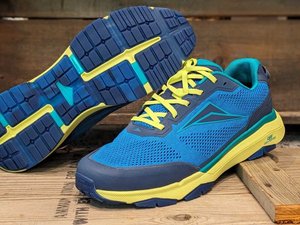
Before sending medical, nursing, or EMS students off into their careers, it is imperative that they practice their skills in patient stimulators, where they “treat” medical actors and receive an objective evaluation from a professor.
Yet evaluations from medical professors can be inconsistent, and every medical actor does not present a case in the same way. Patient stimulators also cost as much as $100,000 to operate, and students may not encounter every patient case in the stimulator before they enter the field.
The Wilmington, Ohio, based startup Virtual Education Systems began in 2016 when co-founder and CEO Robert Moore looked to build a tool that challenge this trend, allowing his medical students to assess a patient and get feedback based on their treatment in a consistent, objective way. After teaming up with a former designer of virtual reality experiences for Sony, Disney and DreamWorks, Moore launched VR Patients, which presents the same standardized patient cases as the in-person patient stimulator but uses avatars instead of medical actors.
“The avatars demonstrate the patient cases consistently every time, and based on the way the provider made decisions on behalf of the patient — how they interviewed the patient, how the patient answered each question, and how they began to treat — the user gets instant feedback as to how they performed on that case,” Moore said.
VR Patients is the only VR patient management system available on the market today. While it was first available to fire departments that offered EMS, VES has since partnered with nursing and medical schools, including Stanford University, The Ohio State University, and The Christ College of Nursing and Health Sciences.
“By going through our patient cases, healthcare providers are gaining and demonstrating competencies they hadn’t previously gotten or had been able to demonstrate in an objective way.”
When using VR Patients, students have access to two VR headsets and computers with 10 different avatars and various care environments for $25,000. VES clients may also change the VR situations to meet local treatment protocols for their area of practice. Aside from the lower price tag and more consistent evaluation, VR Patients offers trainees many more advantages.
“In virtual reality, a phenomenon happens. After about two minutes of being in VR, the brain bridges the gaps between virtual reality and reality,” Moore said. “You believe that you’re in that virtual environment versus knowing that you’re in the environment you’re really in. Because of that, we now take the subjectivity away that the provider knows they’re in a training room and the situation they’re in is not real. They begin to behave and act as though they’re in the real environment.”
VR Patients is could-based and updated with new information every day. While it is still EMS-focused, Moore said VES plans to diversify the system to into the nursing and medical industries. VES just launched the first nursing system, which allows providers to look at lab results, X-rays, ultrasounds, test scans, MRIs and more. The system also incorporates speech recognition, so providers can now talk back and forth with the patients.
Upcoming VR Patients features include a multi-player mode, in which providers who aren’t in the same location can work on a case together at the same time. Providers will also be able to use their own hands instead of a VR glove, allowing them to interact with virtual world, such as picking up and using items within the environment. Inter-professional education and the ability to manage trauma patients are other elements also coming soon.
“We’ll continue to build new avatars, new environments, and new capabilities,” Moore said.
VES now has 10 full-time employees, as well as six independent contractors. Moore says the growth of the company and building out the VR system was fueled by Cincy Tech, a seed fund supported by local corporations, foundations, individuals and local government initiatives. Cincy Tech aims to invest in high-potential technology startups in Southwest Ohio.
“By going through our patient cases, healthcare providers are gaining and demonstrating competencies they hadn’t previously gotten or had been able to demonstrate in an objective way,” Moore said. “We are now able to train and provide access to just about any type of patient case you can imagine, 24 hours a day, seven days a week. In essence, through Cincy Tech’s funding, we’re saving lives.”








